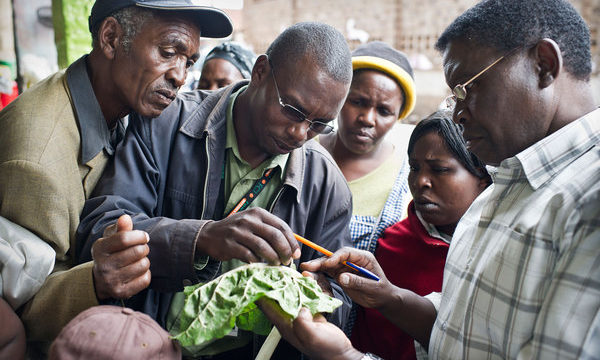
Bees from the orchard leave any fireblight bacteria in the tube through which they enter their hive © Rudolf Moosbeckhofer, AGES
Fireblight is a bacterial disease caused by the species Erwinia amylovora that affects fruit trees including apple and pear. It also affects other members of the rose family, including roses, crabapples and hawthorn. The disease can quickly spread through a plant, killing it within a few months, and can devastate entire orchards within a season. Fireblight is difficult to control; there are no chemicals that are effective once the disease has taken hold, and the spread can mainly only be slowed by pruning infected branches. Early detection of fireblight is therefore essential. Researchers at the Vienna University of Technology have devised a method to detect the disease, not on the fruit trees but on the bees that pollinate them.
The standard method for testing orchards for fireblight is to collect blossom from all of the trees, which takes time and is not always reliable. The new method, developed in partnership with the Austrian Agency for Health and Food Safety (AGES), uses nearby honeybee colonies to do the work of collecting the bacterial samples. Fruit growers can attach plastic tubes lined with foil to the entrance of bee hives in the orchard. Any bees that come into contact with the fireblight bacteria while they were pollinating the apple and pear trees leave traces of the fireblight bacteria on the foil while they are crawling through the tube to enter the hive. The foil can then be removed and tested for bacteria on it with a colour test that quickly and obviously identifies the presence of any fireblight DNA. This test can be carried out by the fruit growers themselves rather than sending samples off to a laboratory, and only takes a few hours. The high precision (it gives a positive result even if only a few bacteria are present in the sample) and simplicity of the test should make it highly valuable to orchard owners.
1 Comment
Leave a Reply
Related News & Blogs
How bees can be a friend to smallholders
In an unprecedented study, honey bees have been found to be the world’s most important single species pollinator in natural ecosystems. Working alongside wild bees, they are also said to be responsible for every one in three bites of food. For the smal…
19 May 2019





what is the risk of the bees spreading the pathogen from flower to flower? are there special precausions taken?